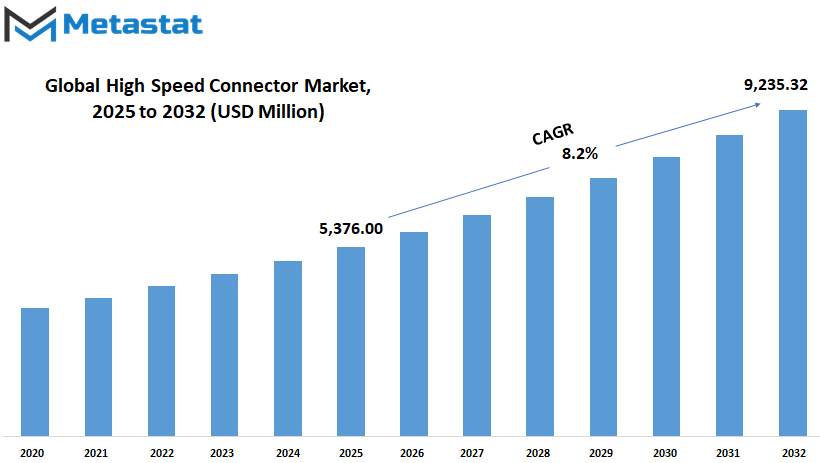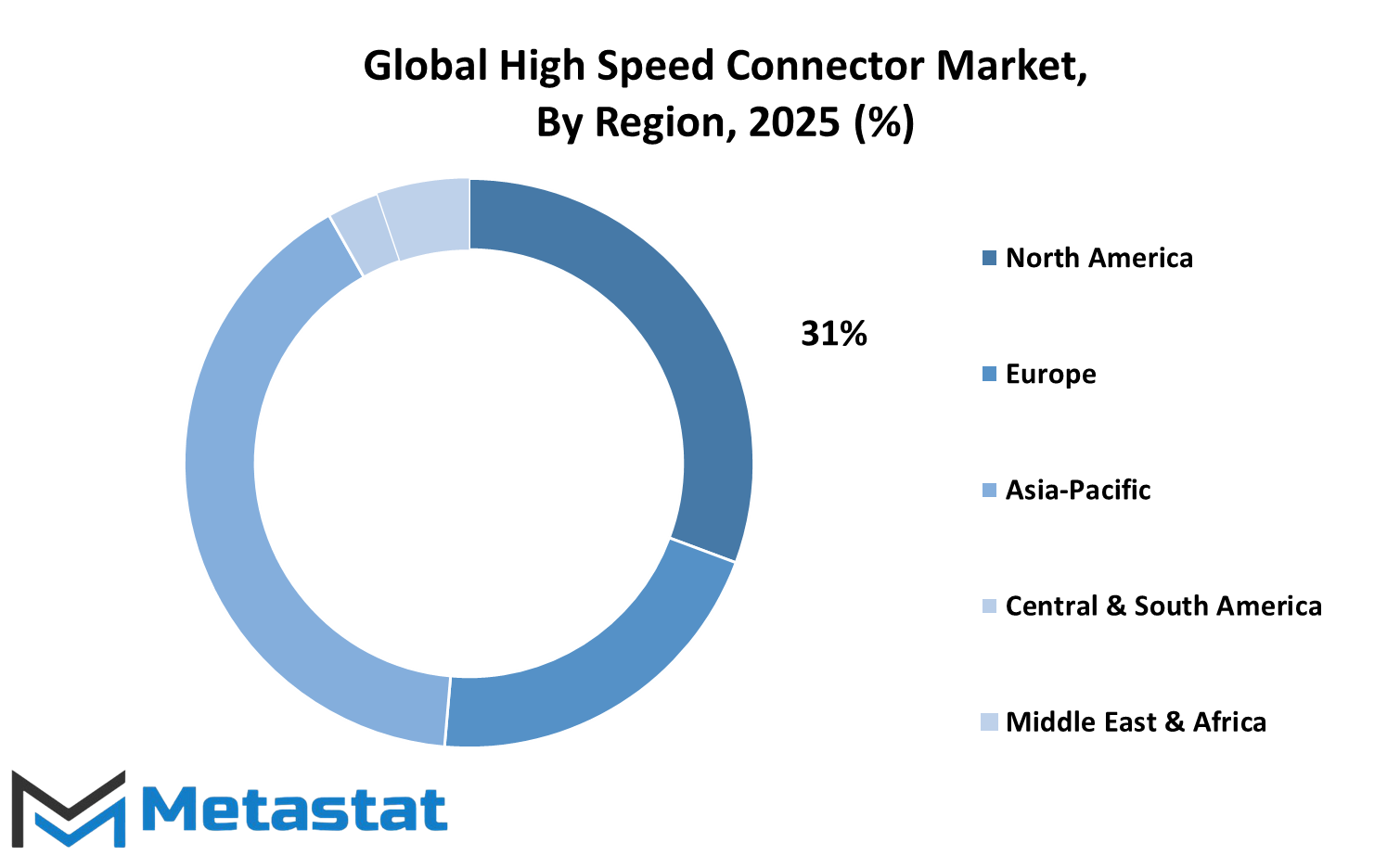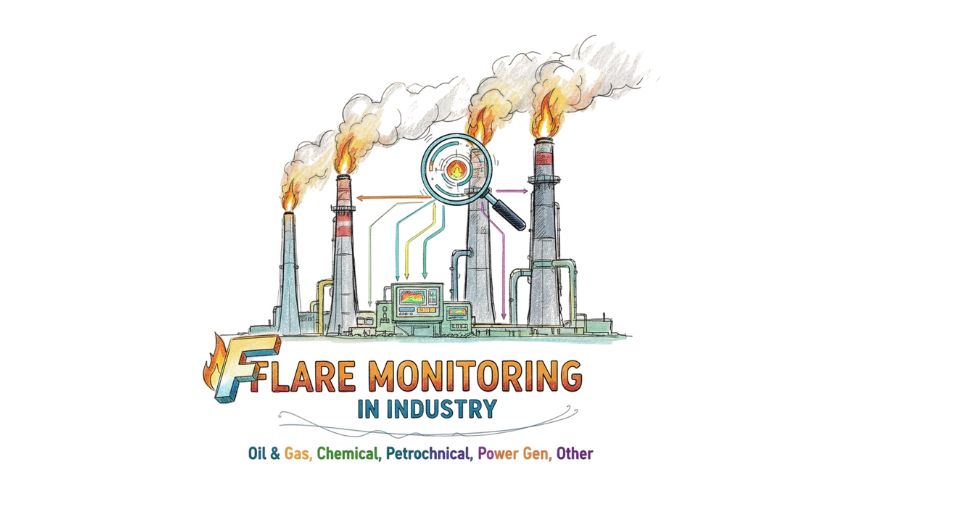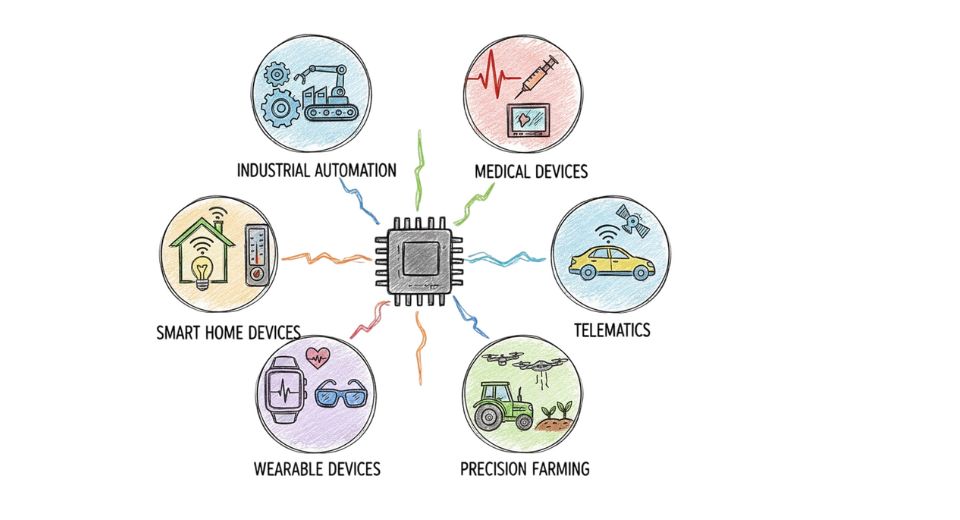MARKET OVERVIEW
The global high speed connector market and its industry will establish a key segment of the electronic components arena, enabling fast data transfer between an increasing number of high-performance applications. This market will concentrate on the manufacturing, distribution, and development of connectors intended to preserve signal integrity at higher frequencies, which are crucial in facilitating communication between complicated systems. These connectors will be designed to fulfill rigorous performance standards in applications where precision, reliability, and high speed are not negotiable.
The global high speed connector market will be used by industries requiring quick and precise data interchange, such as telecommunications, aerospace, automotive electronics, cloud computing infrastructure, and consumer electronics production. As products and systems increasingly process and transfer more information, the need for connectors to accommodate multi-gigabit speeds will grow stronger. System architects and developers will depend on these devices in order not to experience latency, signal loss, and electromagnetic interference in key systems.
This global high speed connector market will cut across different classes of interconnect solutions including board-to-board, cable-to-board, and input/output connectors, all custom-developed to enable high-frequency signal transmission. Product development within this space will be motivated by the necessity to enable standardized protocols such as USB, HDMI, Thunderbolt, and PCI Express, and also custom high-speed protocols designed for enterprise compute systems and data centers. Every use will put specific requirements on connector mechanical and electrical design, influencing how manufacturers approach contact density, pin arrangement, insulation materials, and thermal performance.
The worldwide standards and compliance demands will drive product development. Industry standards for signal integrity, crosstalk resistance, and long-term durability through repeated use will dictate innovation, as companies aim to provide dependable connectivity solutions for consumer-grade and mission-critical applications. High-speed connectors will have to resist not just physical abrasion but also temperature extremes, humidity, and vibration in harsh industrial or mobile applications.
Regional demand trends will follow the rate of infrastructure development and digitalization. Developed economies will emphasize connectors for enterprise networks, defense systems, and automotive platforms relying on real-time processing. On the other hand, emerging markets will favor demand for high-speed solutions in upcoming consumer devices and increasing telecom backbones. Local manufacturing capabilities, import regulations, and technology transfer arrangements will drive supplier strategies around geographies.
The competitive environment of the global high speed connector market will include ongoing design improvements geared toward compactness, performance, and reliability. Suppliers will aim to differentiate themselves through innovation in contact materials, shielding methodology, and connector geometry to achieve maximum bandwidth and minimize interference. Partnerships with OEMs, semiconductor firms, and system integrators will grow more collaborative, with connector design becoming increasingly tied into early-stage product development.
Distribution channels will feature collaborations with niche component distributors, direct sales channels, and online stores serving prototyping and mass production. Technical support, reliability test services, and customization options will emerge as differentiators due to customers requiring application-specific solutions.
The global high speed connector market will further extend its reach into industries dependent on real-time data processing and signal transmission. As digital systems increasingly become interconnected and high-bandwidth communication becomes foundational to system design, this market will react with highly engineered connector solutions that satisfy the changing technical and environmental requirements of next-generation systems
Global high speed connector market is estimated to reach $9,235.32 Million by 2032; growing at a CAGR of 8.2% from 2025 to 2032.

GROWTH FACTORS
The global high speed connector market will grow gradually with the growing need for rapid data transmission in different industries. More systems and devices need faster, more stable connections as technology continues to advance. Greater dependence on high-performance electronic devices, particularly in communication, automotive, and industrial applications, will drive the demand for high-speed connectors. Individuals nowadays want their systems to run efficiently and without lag, making reliable connectors a critical element in constructing smart systems and connected infrastructure.
One of the primary drivers of growth in the global high speed connector market is the increasing demand for enhanced data center connectivity. With companies shifting towards cloud platforms and processing greater amounts of data than ever before, they need systems that can process large volumes of data in a timely manner. High-speed connectors assist in developing these robust networks, which makes them a necessity in future digital realms' building blocks. The expansion of consumer electronics is another significant factor. Modern electronics such as smartphones, laptops, and gaming devices rely on quicker connections to provide seamless user experiences, and this keeps the pace of demand for such connectors going.
However, there are certain aspects which may dampen this growth. One of the issues is the expense of manufacturing and installing such sophisticated connectors. As they must comply with high levels of performance and safety, they tend to demand advanced materials and procedures for manufacture, thus increasing the cost. Smaller companies or underdeveloped nations may not have the means to invest in such technology. Another issue is the difficulty in maintaining connector performance in harsh conditions. Heat, vibration, and moisture exposure may influence the functionality of these parts, which may deter buyers unless the products themselves are shown to be durable.
Even with these challenges, there are good prospects on the horizon. The growing demand for electric cars and intelligent transportation systems is expected to enhance the demand for high-speed connectors. These systems depend on exchange of data in real-time, and thus quick and stable connections are an essential requirement. Further, as nations invest increasingly in developing sophisticated infrastructure and smart cities, they will have better network solutions, which can further propel the global high speed connector market growth.
The global high speed connector market in the coming years will gain from technologies that compact connectors, speed them up, and reduce power consumption. With industries seeking superior ways of controlling complicated systems and need for velocity increasing, this market is set for robust growth.
MARKET SEGMENTATION
By Product Type
The global high speed connector market is headed towards a future defined by cutting-edge technology and increasing demand for high-speed data transfer. As devices grow smarter and more interlinked, the demand for high-speed connectors grows stronger. These connectors are central to enabling communication between disparate components of a system to ensure that signals travel fast and distinctly. As industries like telecommunications, automotive, and consumer electronics require improved performance, the need for consistent, high-speed solutions is increasing at a steady rate.
Examining the global high speed connector market based on product type, Board-to-Board Connectors are anticipated to dominate with a value of USD 2,457.11 million by 2025. Such growth can be attributed to their application in small, high-performance devices where there is limited space but high speed. These connectors support designers in creating smaller but high-speed systems. Cable-to-Board Connectors also increase in value, worth an estimated USD 1,995.56 million. Their capability to offer reliable connections even in flexible or mobile systems makes them a crucial choice for developing hardware requirements. In the meantime, the category designated as Others, such as newer or more advanced connector varieties, is anticipated to reach USD 923.32 million. These statistics demonstrate how all the segments are contributing to determining the course of the global high speed connector market.
The global high speed connector market future relies not only on growing demand but on innovation as well. Firms will make their products not only faster but also more efficient and long-lasting. This means improved materials, enhanced designs, and more intelligent manufacturing processes. As more individuals and companies depend on quick internet, cloud computing, and artificial intelligence, the demand for reliable, stable connectors will continue to increase. The industry will also improve as more parts of the world start investing in upgrading their networks and digital infrastructure.
Environmental consciousness will become more involved in the process of creating new products. As the laws tighten and businesses strive for sustainability, the next-generation connectors will be constructed from materials that are recyclable and processes that conserve energy. This symbiosis between velocity, performance, and ecological stewardship will dictate the direction of the market as time goes on. In brief, the global high speed connector market will progress with both technological advancements and a firm eye on long-term consequences, to ensure that it will be an integral part of the digital future.
By End-User
The global high speed connector market will remain even more vital as technology continues to evolve and industries seek out faster, more efficient means of moving information. High-speed connectors are compact but powerful devices utilized for controlling high-frequency signals and are vital in any industry where speed and performance cannot be sacrificed. As the need for higher-speed communication increases, these connectors will be at the center of innovation, humbly underpinning the progress we tend to take for granted.
In telecommunication, the requirement for seamless, rapid data exchange exists on a day-to-day basis. With ever-increasing mobile networks and utilization of intelligent devices, carriers will require more effective solutions. High speed connectors are at the center of that improvement. They will ensure systems stay stable while they support increased traffic. In the same way, data centers rely on sleek and speedy data movement. With more businesses leveraging cloud services and big storage, these connectors will provide faster operation, less downtime, and improved service overall.
The automotive sector is also evolving quickly. As smart cars and autonomous driving advance, the automobile is becoming increasingly reliant on accurate data transfer. High speed connectors ensure that all the sensors, cameras, and communication systems within a vehicle can communicate rapidly and without mistake. This will become even more significant as the vehicle becomes more advanced.
There is no margin for error in aerospace and defense. Systems have to operate in harsh conditions, be it high altitude or pressure situations. High speed connectors need to deliver with precision, speed, and toughness. Their function is vital in maintaining lines of communication and equipment as per design. With defense systems embracing newer technology, these connectors will handle more sophisticated and faster equipment without compromising safety.
Other markets like medical devices or industrial control are beginning to take advantage of these connectors as well. The shared requirement among all these markets is easy — speed, reliability, and repeatable performance. In the future, the global high speed connector market will continue to be of interest as new devices and platforms become available. All these end-applications have their own specific requirements, but they all depend upon solid and reliable connections to address increasing expectations.
As businesses lean in on technology and tomorrow's potential, these connectors will be more than parts. They will discreetly enable the systems that will define how we live, work, and interact with each other.
|
Forecast Period |
2025-2032 |
|
Market Size in 2025 |
$5,376.00 million |
|
Market Size by 2032 |
$9,235.32 Million |
|
Growth Rate from 2025 to 2032 |
8.2% |
|
Base Year |
2024 |
|
Regions Covered |
North America, Europe, Asia-Pacific Green, South America, Middle East & Africa |
REGIONAL ANALYSIS
The global high speed connector market is also reflecting strong indications of future development on the basis of technology advancements and increasing demand in most of the regions. With technology advancing at a fast pace, the demand for faster and better data transfer will always be of utmost importance. High speed connectors are at the forefront of this transition, facilitating quicker communication among systems and components in various industries such as telecommunications, automotive, and electronics. Their role will be more in demand as more devices are going to use fast data interchange to operate effectively. Reviewing the geographical distribution of the marketplace around the globe, each region has its pros and cons.
North America will continue to be a dominating force, particularly with robust activity within the U.S., Canada, and Mexico. These nations have well-developed infrastructures and the presence of established large technology companies, which are largely dependent on fast and timely connectivity. In Europe, the UK, Germany, France, and Italy are also likely to drive the demand, as their industries shift to smart systems and digital communication platforms. The Asia-Pacific region is among the fastest-growing regions of the world, led by India, China, Japan, and South Korea. They are putting more money into digital innovation, 5G deployments, and electronics production.
This should lead to an increasing demand for high speed connectors as the trend towards smarter cities and improved technology solutions becomes more pronounced. South America, including Brazil and Argentina, will experience deceleration in growth against Asia-Pacific but still remains optimistic with urbanization and digital adoption on the rise. In the meantime, the Middle East and Africa bloc, including GCC Countries, Egypt, and South Africa, is slowly solidifying its position through investment in communications technology and infrastructure projects. With businesses everywhere embracing more complex and data-based systems, the utilization of high speed connectors will become increasingly noticeable. The connectors will enable major applications in real-time data exchange and low delay. Future developments could be in the form of smaller, more efficient, and power-effective connectors capable of managing larger loads of data.
All this will reengineer the way companies, governments, and individuals engage with technology. Although the pace in each region will be different, the overall demand for improved and faster data solutions will drive the global high speed connector market. The expansion will not just transform the communication system but also transform the way we live everyday technology.

COMPETITIVE PLAYERS
The global high speed connector market is slowly emerging as one of the most critical pieces of equipment in sophisticated communication and data transfer systems. Since demand for faster and more effective connections increases in different industries every year, this industry is receiving major attention from manufacturers and investors. The future holds an increasing dependence on high-speed connectors with the growth of data centers, cloud computing, and smart devices. This increasing demand for high-speed data transmission is propelling innovation and intensifying competition among organizations that are working towards making improved, more durable, and compact connectors without sacrificing performance.
There is likely to be heightened competition in the global high speed connector market as major players commit to research and development to address the increasing demand for speed, miniaturization, and ruggedness. Other such companies as TE Connectivity, Amphenol Corporation, Molex Incorporated, and Samtec are already renowned for their persistent efforts to deliver state-of-the-art solutions. These companies are not only emphasizing quality and speed but also taking care of energy efficiency and long-term reliability. These include strategies of enhancing the material and structure of connectors to minimize signal loss and maintain a secure connection even in difficult environments.
Smaller but highly innovative firms such as Neoconix and XI’AN SPRING TECHNOLOGY CO.,LTD are also playing an increasingly important role. Their ability to adapt quickly and respond to new challenges will allow them to remain competitive. This flexibility gives them a chance to collaborate with larger companies or serve niche markets with custom-made solutions. Firms like Hirose Electric Co., Ltd., Smiths Interconnect, and Rosenberger are diversifying their product offerings and venturing into new regional markets in order to enhance their global reach.
In the future, the demand for more intelligent cities, autonomous vehicles, and fourth-generation communication networks will only make this sector grow more valuable. Products from companies such as Yamaichi Electronics Co., Ltd., GREENCONNCo., Ltd., JAE Electronics, and Phoenix Contact will find themselves being integrated into future technologies, ranging from medical equipment to industrial automation systems. The capability of providing connectors that are capable of supporting high frequencies yet are still durable will make some players stand out.
The future of the market will rely on how well they are able to foresee future demands. The need for speed, precision, and efficiency is only going to rise, and the ones that see this early and make significant changes will probably dictate the future of the global high speed connector market.
High Speed Connector Market Key Segments:
By Product Type
- Board-to-Board Connectors
- Cable-to-Board Connectors
- Others
By End-User
- Telecommunications
- Data Centers
- Automotive
- Aerospace & Defense
- Others
Key Global High Speed Connector Industry Players
- TE Connectivity
- Amphenol Corporation
- Molex Incorporated
- Samtec
- Hirose Electric Co., Ltd.
- Fujitsu Ltd.
- Neoconix
- Smiths Interconnect
- Rosenberger
- IMS Connector Systems
- GREENCONNCo., Ltd.
- Yamaichi Electronics Co., Ltd.
- 3M
- Phoenix Contact
- JAE Electronics
- AirBorn, Inc.
- XI’AN SPRING TECHNOLOGY CO.,LTD.
WHAT REPORT PROVIDES
- Full in-depth analysis of the parent Industry
- Important changes in market and its dynamics
- Segmentation details of the market
- Former, on-going, and projected market analysis in terms of volume and value
- Assessment of niche industry developments
- Market share analysis
- Key strategies of major players
- Emerging segments and regional growth potential








 US: +1 3023308252
US: +1 3023308252






